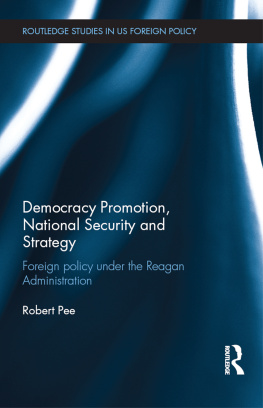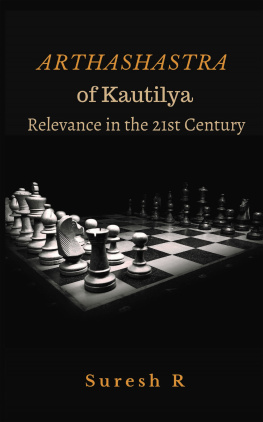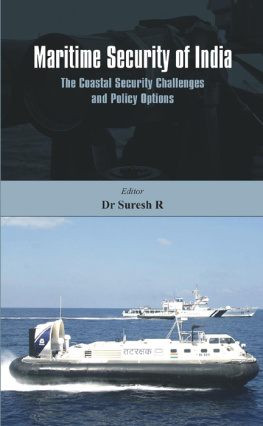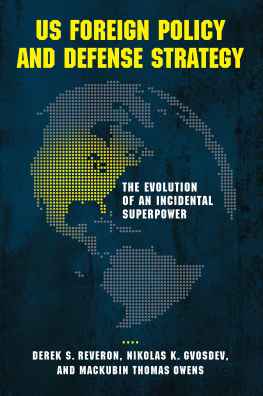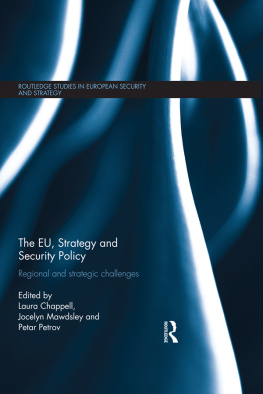E book published by
Vij Multimedia
Vij Books India Pvt Ltd
(Publishers, Distributors & Importers)
2/19, Ansari Road, Darya Ganj
New Delhi - 110002
Phones: 91-11-43596460, 91-11-47340674
Fax: 91-11-47340674
e-mail :
web: www.vijbooks.com
Copyright 2012, United Service Institution of India, New Delhi
ISBN: 978-93-81411-73-5
All rights reserved.
No part of this book may be reproduced, stored in a retrieval system, transmitted or utilized in any form or by any means, electronic, mechanical, photocopying, recording or otherwise, without the prior permission of the copyright owner. Application for such permission should be addressed to the publisher.
PREFACE
Our country is being called on to accomplish four difficult missions at once. First, we must win the ongoing proxy war on terrorism more on our Western borders. Second, we have to prepare to stabilize the Internal Insurgencies. Thirdly, we have to prepare to face military challenges from the neighborhood and the Indian Ocean Region (IOR). Fourthly, we should be prepared for the wars of the future, which may transcend the existing concept of a classical-conventional war model from a Mass Manouvre-Methodology (M3) to more of a Networked Effect Based Operations (NEBO) category within the war fighting domain of traditional wars for national defense to the realms of non-traditional threats, like terrorism, water or ecological wars and even cyber and space dimensions. Therefore, we must correspondingly transform the Indian Armed Forces so that they can deter and defend against the cumulative emerging threats of the 21st century.
Each of these four missions is critical; none can be put off. We cannot delay transformation while we fight the war on terrorism. As we painfully learned on 26/11, our adversaries are already transforming. They are watching us; they are studying how we were successfully attacked, how we responded, and the ways in which we may be vulnerable in the future. We stand still at our peril. If we do not identify our vulnerabilities, fix what is broken, and establish processes to enable innovation and adaptabilityif we do not transformour enemies will surely find new ways to attack us. In sum, transformation is not a goal for tomorrow; it is a fundamentally important endeavor that we must embrace in earnest today.
Transformation should lie at the heart of our new approach to defense. The development of transformational capabilities, processes, and force structures should be given strategic focus to meet the principal challenges under our defense strategy. In the Indian context, we can outline at least six operational goals for any worth while military transformation strategy. The strategy should seek to ensure that changes occur not only in the operating concepts we develop and the systems we acquire but also in our military culture and the processes that drive investment decisions. The dichotomy which remains is that should we follow the western model or should we have a theoretical construct unique to the Indian environment? The latter alone, may prove risky as it may involve re-inventing the wheel since the West enjoys the military technology leadership and research. However, at the same time there are many areas, which may require entirely an Indigenous approach. Therefore, one should keep an open mind in developing a transformational model for India.
The success story of Indian Defense Forces over last 60 years will outshine any other military of the world; may be in terms of counterinsurgency operations or even conventional military operations against Pakistan or China; or its contribution to the United Nations for Peace Keeping or the role during various disasters in the country. Nevertheless the above, because of the changing geo-political global and Asian structure, there is a transient world order, where India has the potential and is poised to fulfill many global responsibilities. In addition, India has a rising peer super power in the neighbourhood, with many competing interests. This changing strategic template coupled with the ongoing RMA will demand transformation of the military too.
India is already ceased with the necessity of transformation albeit without any documented national security guidelines or operating instructions, which are legislated or have the validation of at least the Cabinet Committee on Security(CCS).In other words the first step would be to create a draft security strategy based on many assumptions, like the foreign policy or the cumulative emerging threat scenario as appreciated by the Defence Intelligence Agency(DIA).The good part is, that in spite of no cogent higher directions, we on our own are already on course to transform our military into an agile, network-centric, knowledge-based force capable of conducting effective joint and combined military operations against all potential future adversaries. Thus what is required now is to stitch the seams between the services by an integrated joint effort over the long term. This will enable cross-service connectivity and interpolation, which will enable avoiding duplication, legacy matching and cost effective budgeting and more realistic LTIPPs. (HQ IDS should further enhance this aspect).
This research in totality is therefore more as an idea or a theoretical construct, basically to bring in more clarity to the various options available for this great transformation of the Indian military. The various landmarks of transformation milestones achieved so far by the three services should be further built and added upon the existing current plans of the ongoing modernization plan and shift to a higher plane of transformational activities. The subtle difference between modernization and transformation is that the former is basically up gradation/ introduction of new weapon systems and the latter is adding flesh to the bones by introducing strategy, leadership, new organizations, new architectures like network etc, culminating in a new war-winning strategy against all odds.
This book is a result of the project allotted to me by USI under the Field Marshal K. M. Cariappa Chair.
-Author
1
After Generation Next-Indian Military: Prognosis
Need for Transformation
General
The Indian military, if it is to measure up to its future responsibilities as an effective instrument of statecraft and a trusted institution of society, must embark on the path of thoroughgoing transformation. This would actually entail working for an After Generation Next Indian Military(AGNIM). This means truly sweeping overhaul, not the marginal incremental change that has characterised the self-justifying, self-deluding rhetoric of Defence Transformation till date.
The extremely challenging environment which India faces today and will continue to face in the years ahead, requires a military body, significantly superior from the one we now have. What we need is a Technology Oriented- Strategically effective (TOSE) military: which is an instrument of power, capable of fulfilling the larger aims of regional security, over and above the fundamental and primary task of national security. Therefore, it has to be a self-contained, self-sufficient, self defending force that can thwart attacks on all fronts, simultaneously against one, two or multiple aggressors. It should also enable operating with allies. This will necessitate overlaps and joint exercises. The ongoing Transformation and Revolution in Geo-Political and MilitaryAffairs (EBO)or which can achieve the end result of victory by acquiring a qualitative edge in a very short time. Any transformation in the above contoured parameters for the future will require a protracted scientific-systems approach.


